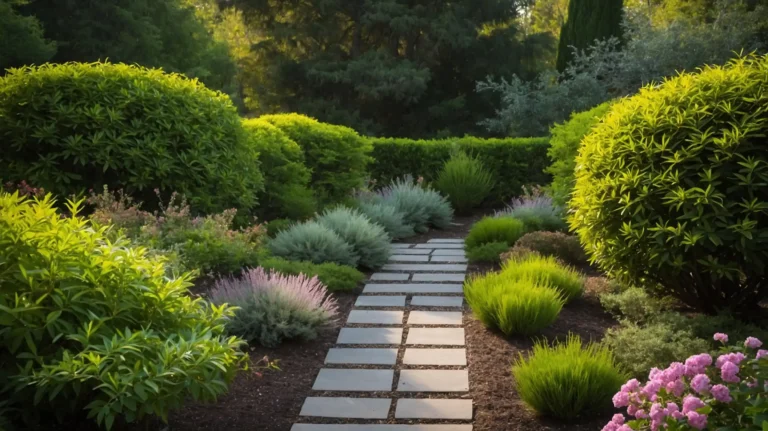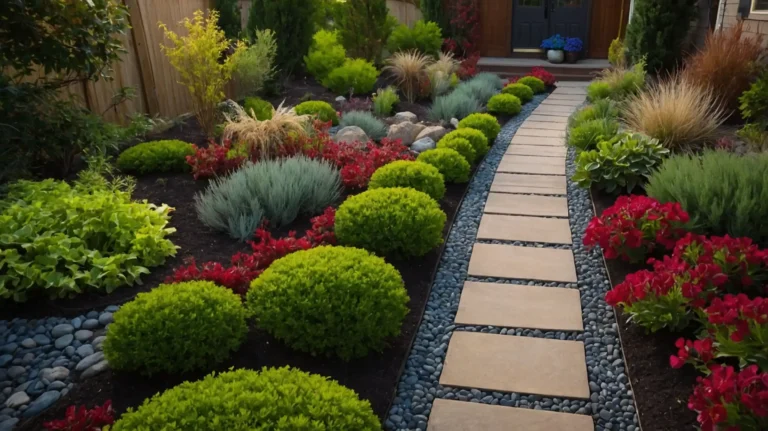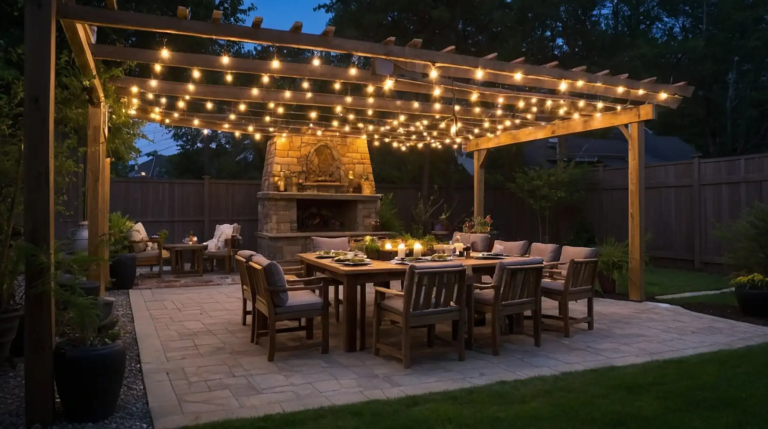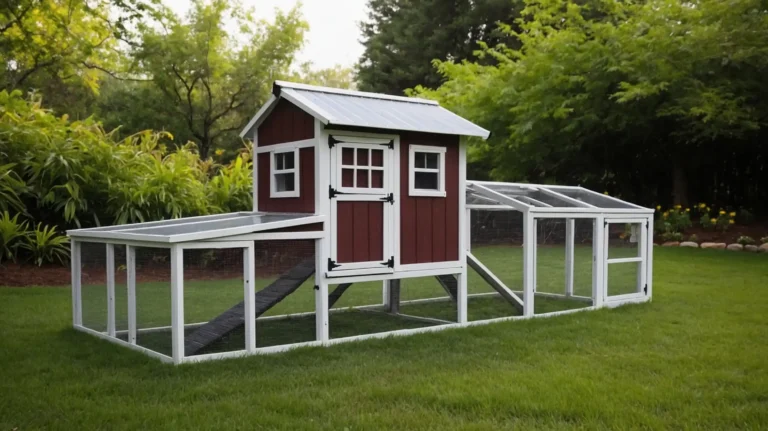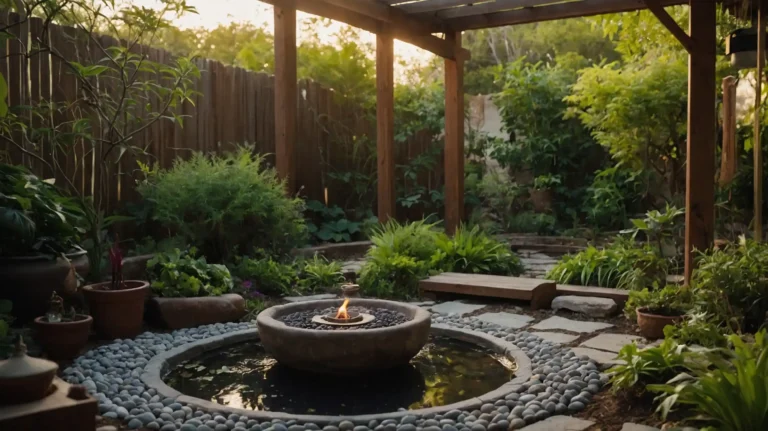27 Budget-Friendly Garden Edging Ideas That Will Transform Your Landscape
Garden edging is the unsung hero of landscape design, creating clean lines that separate your flower beds from lawns while adding serious style to your outdoor space.
Beyond aesthetics, good edging prevents grass from invading garden beds and stops mulch from spilling onto pathways.
With countless materials and designs to choose from, you can find edging solutions that perfectly complement your garden’s style—whether modern, rustic, formal, or whimsical.
The right edging adds that polished, professional touch that makes your landscape look intentional and well-maintained.
Ready to elevate your garden’s appearance with minimal effort?
These 27 creative edging ideas range from upcycled finds to natural materials, offering something for every budget, skill level, and garden style.
1: Repurposed Brick Borders

Create a classic, timeless edge by laying reclaimed bricks in various patterns—flat, on edge, or diagonally—to define your garden boundaries with vintage charm.
Source old bricks from demolition sites or community marketplaces for authentic weathering and character.
The varied colors and worn textures bring instant maturity to new gardens.
For extra stability, set bricks in a shallow trench with sand beneath for proper leveling.
2: Natural Stone Boundaries

Collect fieldstones or purchase landscape rocks to create an organic-looking border that blends beautifully with natural garden styles.
Stack smaller stones for a rustic wall or place larger specimens individually as accent points. Allow small creeping plants to grow between stones for a naturalized effect.
This approach works perfectly for cottage gardens or informal landscape designs where rigid lines would feel out of place.
3: Living Herb Borders

Plant low-growing herbs like thyme, oregano, or chamomile to form aromatic, functional edging that defines spaces while providing culinary ingredients.
These hardy plants stand up to occasional foot traffic and release delightful scents when brushed against.
Choose varieties with different leaf colors and textures for visual interest.
The bonus? You’ll attract beneficial pollinators while keeping some pests at bay with the herbs’ natural aromatic oils.
4: Woven Willow Edging

Create charming, cottage-style boundaries by weaving flexible willow branches into short decorative fences that add vertical interest to garden beds.
Harvest branches in late winter when they’re most pliable, or purchase willow rods from gardening suppliers.
Push sturdy uprights into the soil, then weave horizontal branches between them.
This biodegradable option lasts 2-3 years before needing replacement, making it perfect for gardeners who enjoy seasonal changes.
5: Vintage Bottle Borders

Collect colorful glass bottles and install them upside down along garden edges for a whimsical, light-catching border that adds unexpected color.
Wine bottles, antique medicine bottles, or colorful soda bottles all work beautifully. Dig a narrow trench and bury bottles to just below their shoulders for stability.
This upcycled edging creates particularly stunning effects when backlit by morning or evening sun.
6: Log Slice Pathways

Transform fallen trees or pruned branches into charming stepping-stone edging by cutting them into 2-3 inch discs and partially burying them along garden boundaries.
Arrange the wood slices at equal distances for a rhythmic effect. Apply a clear sealer to extend their lifespan if you prefer a longer-lasting installation.
This rustic approach works beautifully in woodland gardens, adding natural texture and decomposing slowly to improve soil over time.
7: Decorative Concrete Molds

Create personalized concrete edging using specialty molds that imprint patterns resembling cobblestone, brick, or natural stone without the high cost.
Pour concrete directly into forms placed along your garden edge. Add concrete dye before pouring for customized color that complements your landscape.
This durable option withstands lawn mowers, foot traffic, and harsh weather conditions while providing a neat, continuous border.
8: Recycled Plate Edging

Install colorful vintage plates partially buried in the soil to create an unexpected, whimsical border that adds personality to cottage gardens.
Source chipped or cracked plates from thrift stores—imperfections won’t matter since only the edges will show. Bury plates halfway, leaving just the decorative rims visible.
This conversation-starting edging works particularly well in children’s gardens or quirky, personalized spaces that welcome artistic expression.
9: Steel Edging Strips

Install flexible steel strips that create clean, contemporary lines perfect for modern landscape designs requiring minimal visual interruption.
Available in various heights, these durable edges virtually disappear from certain angles while effectively separating materials.
Their thin profile maximizes planting space in small gardens.
The weathering patina that develops over time adds subtle character without detracting from your plantings.
10: Gabion Rock Walls

Create short retaining walls using wire cages filled with stones, recycled concrete, or tumbled glass to form substantial, drainage-friendly edging.
These permeable structures allow water flow while preventing soil erosion on slopes. Mix in larger decorative stones facing outward for enhanced visual appeal.
This industrial-inspired approach pairs beautifully with contemporary architecture and provides excellent insect habitat in your garden ecosystem.
11: Bamboo Roll Edging

Install pre-made bamboo rolls or create your own using bamboo stakes tied together with weather-resistant twine to form natural, Asian-inspired garden boundaries.
The warm tones and natural texture complement both tropical and minimalist garden styles.
Choose split bamboo for a more refined appearance or whole poles for rustic charm.
This lightweight option installs quickly with minimal tools and adds instant structure to newly established garden beds.
12: Scalloped Concrete Edging

Create continuous concrete borders with decorative scalloped or curved patterns that add classical elegance to formal garden designs.
Pre-made sections install quickly, while poured-in-place versions allow for customized shapes.
The uniform appearance creates clean, defined lines that enhance traditional landscapes.
This durable option withstands decades of exposure to elements while maintaining its distinctive profile and facilitating easy lawn maintenance.
13: Terracotta Pot Borders

Line up broken terracotta pots with their curved edges facing outward to create a scalloped effect that recycles damaged garden containers.
Bury the pot fragments so only their curved rims show above ground. The weathered orange-red tones warm up the garden palette and improve with age.
This Mediterranean-inspired approach works beautifully in herb gardens and sunny, drought-tolerant landscapes where the warm colors complement silver-leaved plants.
14: Wattle Woven Fencing

Create traditional woven barriers using hazel, dogwood, or willow branches woven between upright stakes to form attractive, biodegradable garden dividers.
This ancient technique creates rustic, textural borders that complement informal planting styles.
Vary the height for different garden needs—taller sections deter pets while shorter ones simply define spaces.
The natural materials weather beautifully and eventually decompose, making this an environmentally friendly choice.
15: Wine Cork Borders

Collect used wine corks and thread them onto weather-resistant wire to create flexible, buoyant borders with unique texture and sustainability appeal.
Push metal rods through the center of each cork, then anchor the finished strands to secure stakes.
The natural cork material gradually weathers to a silvery patina while remaining buoyant.
This conversation-starting edging suits whimsical gardens and outdoor entertaining areas where their origin story becomes a talking point.
16: Log Roll Edging

Install sections of connected wooden half-rounds to create uniform, rustic borders that add natural warmth and texture to garden edges.
Pre-made sections install quickly with minimal tools required. The standard height prevents lawn grass from invading while clearly defining bed boundaries.
This affordable option works particularly well in woodland gardens, cottage settings, or transitional areas between formal and natural landscapes.
17: Seashell Borders

Collect beach finds or purchase bulk seashells to create coastal-inspired edging that brings vacation vibes to your garden boundaries.
Mix larger specimens with smaller shells, partially burying them to create a natural-looking border. Add occasional driftwood pieces for textural contrast.
This memory-evoking option works beautifully in sandy soil gardens, beach-themed landscapes, or children’s play areas with nautical themes.
18: Pebble Mosaic Edging

Create permanent artistic borders by setting rounded pebbles in concrete to form decorative patterns, swirls, or pictures along garden boundaries.
Sort stones by size and color before arranging them in prepared forms. The smooth, water-worn surfaces invite both visual and tactile engagement with your garden edges.
This labor-intensive but highly rewarding approach creates heirloom-quality garden features that improve with age and weathering.
19: Painted Tire Planters

Transform old tires into colorful garden edging by cutting, flipping, and painting the sidewalls to create scalloped flower-like shapes.
Remove the outer sidewall of each tire, then paint with exterior-grade colors that complement your garden scheme. Install by partially burying the cut edge in soil.
This upcycled approach keeps tires out of landfills while adding whimsical, child-friendly borders to casual garden spaces.
20: Stacked Slate Edging

Create dramatic vertical interest by stacking flat pieces of slate or shale to form natural-looking low walls that double as insect habitat.
Place larger pieces at the bottom, gradually decreasing size toward the top. The natural variation in stone thickness and color creates built-in visual interest.
This sophisticated option complements contemporary garden designs while providing excellent thermal mass that benefits nearby plants.
21: Basket Weave Brick Pattern

Arrange standard bricks in alternating horizontal and vertical patterns to create textural interest in classic garden edging that never goes out of style.
This traditional pattern provides excellent stability without requiring mortar.
The small gaps between bricks allow for beneficial drainage while maintaining neat garden boundaries.
This timeless approach works with various architectural styles and can be installed in straight lines or gentle curves to suit your garden layout.
22: Upright Branch Borders

Collect similar-sized branches and install them vertically side-by-side to create rustic picket-style edging that adds woodland charm to garden boundaries.
Cut branches to equal lengths with diagonal bottoms for easier installation. Drive each branch several inches into the soil, placing them close together for a continuous border.
This biodegradable option gradually weathers to a silver-gray while providing temporary habitat for beneficial insects.
23: Colorful Painted Stones

Collect medium-sized rocks and paint them with weatherproof exterior paints to create playful, personalized borders that add unexpected color.
Choose complementary color schemes or create rainbow progressions for maximum impact. Apply several coats of clear exterior sealer to protect your artwork.
This customizable approach works beautifully in children’s gardens, school landscapes, or any space where conventional edging feels too serious.
24: Recycled Plastic Edging
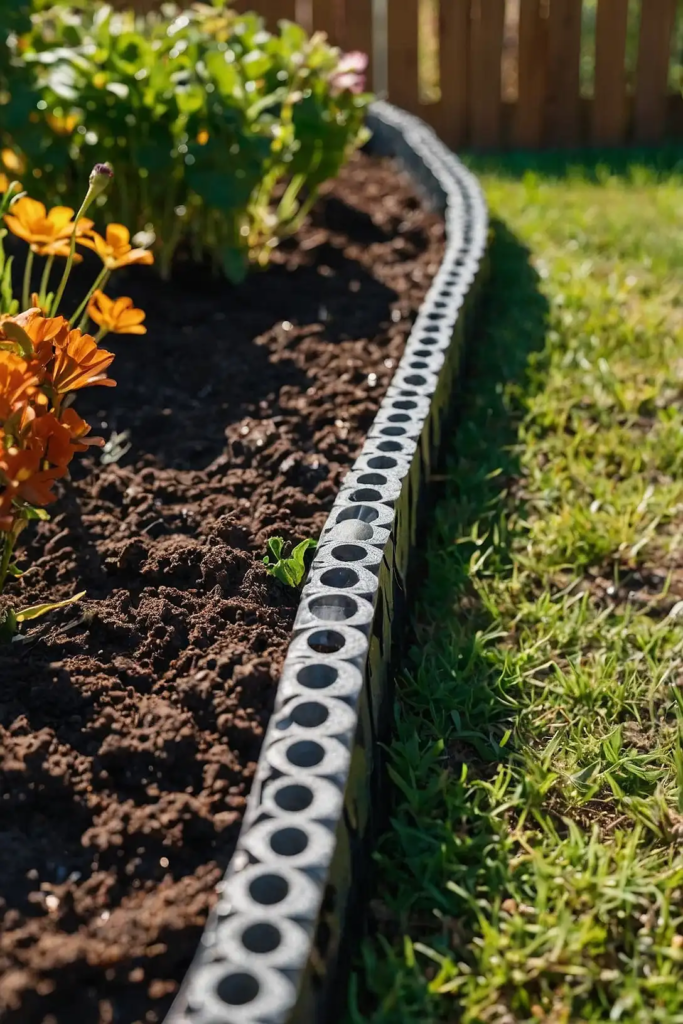
Install eco-friendly garden borders made from recycled plastic that combine durability with environmental benefits in an easy-to-install package.
These flexible products mimic natural materials like stone or wood while outlasting them in harsh conditions. Many interlock for easy installation without specialized tools.
This low-maintenance option stands up to lawn mowers, resists fading, and never needs painting or sealing—perfect for busy gardeners.
25: Ornamental Iron Edging

Add Victorian-inspired elegance with decorative metal edging featuring scrollwork, floral designs, or geometric patterns that elevate your garden’s style.
These durable borders create instant character with their substantial presence and detailed craftsmanship.
Many sections stake directly into the ground without requiring concrete footings.
This investment-quality option works beautifully in heritage gardens, formal designs, or as focal-point edging around special plantings.
26: Living Willow Structures

Create grow-in-place willow edges by planting live willow stakes that root and sprout to form living garden boundaries you can weave and shape.
Plant dormant willow rods in winter or early spring, then train the new growth horizontally as it develops.
The resulting living fence can be maintained through annual pruning.
This dynamic border grows denser each year, providing habitat for birds while adding movement and seasonal interest to garden edges.
27: Hypertufa Trough Borders

Craft your own lightweight concrete-like containers using hypertufa mixture (cement, peat moss, and perlite) formed into rustic troughs that double as edging.
These hand-shaped planters develop beautiful aged patinas quickly and can be planted with sedums, small alpines, or herbs.
Their substantial presence clearly defines garden boundaries.
This customizable approach allows you to create perfectly sized borders for any garden space with that sought-after aged, weathered appearance from day one.
Conclusion
Great garden edging combines form and function to elevate your entire landscape.
Start with one section using materials you already have on hand, then watch how this simple upgrade transforms your garden’s professional appearance and maintainability.


